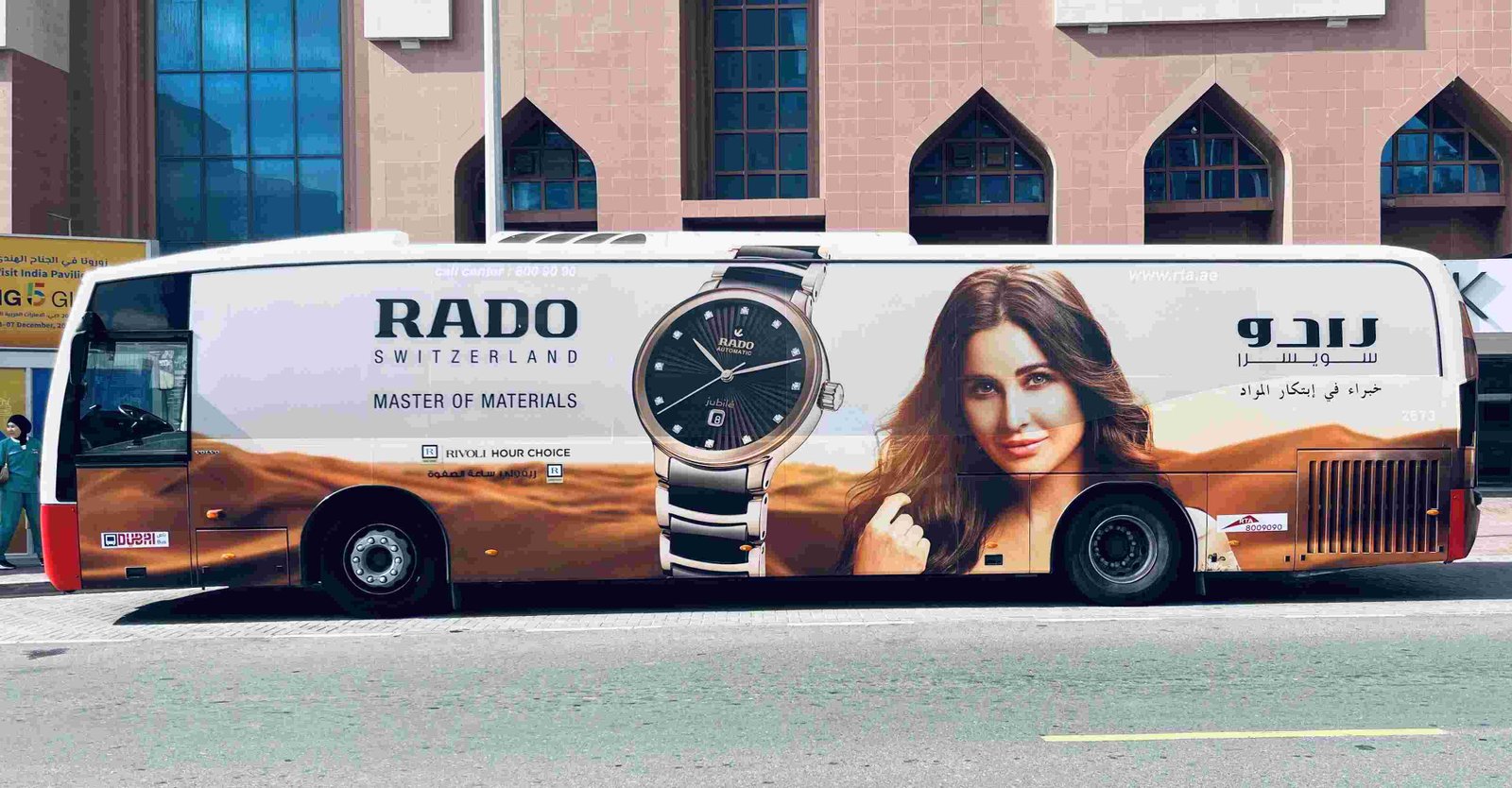Finding the best marketing agency can be tough. Learn the key factors to look for to ensure you get expert strategy and high ROI.
Mobile Advertising Solutions: Effective Transit Ads Now!

Summary:
Transit advertising is a strong platform to connect with urban audiences as it offers higher visibility and repeated exposure.
March 02, 2025
Did you know that over 70% of urban commuters are reached daily with transit advertising? (Source: Outdoor Advertising Association of America). With city streets buzzing around with potential customers, businesses are turning to transit ads campaigns for enhanced visibility. Whether on buses, taxis, metro trains, or ride-share vehicles, transit ads deliver a high-impact, cost-effective way of building brand awareness because they travel to where people are, creating multiple impressions among diverse audiences.
But how to keep transit ads campaigns that catch users' attention and yield results? The article outlines 10 essential steps in running a high-impact transit ads campaign that helps the business stand out amid Dubai's competitive advertising landscape.
1. Understand Your Target Demographic in Terms of interests, pains, and pleasures.
Effective transit ad campaigns deliberately put effort into getting in the audience's skin. Advertisers will need to dig deeper and understand key demographics like age, income, places of residence, and behavioral actions taken by the target audience. The major areas of consideration are:
- What kind of problems does the audience face daily?
- How do your product and/or services resolve their particular issue?
- What type of creative visual and messaging will capture their attention?
To learn their target market preferences, they review any available data concerning their customers, conduct stick surveys, and note down transit routes frequently frequented by them. Well-researched transit ads campaigns ensure deliveries are made when audience engagements peak, thus increasing conversion rates.
2. Opt for Perfect Transit Medium for Maximum Audience Outreach
Transit advertising is different for different mediums, and reaching the right audience depends on which medium you choose. Simple choices of transit advertising are:
- Bus advertisements (wraps, back panels, side displays)
- Taxi advertisements (rooftop screens, door branding)
- Metro and tram advertisements (station posters, train wraps)
- Rideshare vehicle advertisements (inside digital display, rear window ads)
For instance, if the idea is to reach a wider audience, bus ads have the most reach because of their allocated city routes; on the other hand, it may be more reasonable to put the transit ads inside luxurious rideshare cars to attract high-income group members. The right planning ensures crisp communication with the intended audience.
3. Create a Clear and Effective Short Message
Transit ads usually attract very limited attention from commuters; the few seconds they have to look at these ads are very few. As such, it's more important to keep the advertising short and to the point essence of a transit ad campaign must be:
- An interesting headline
- A very strong call-to-action (CTA)
- Minimal but effective visuals
Instead of a long-winded sentence, consider putting "Dubai's #1 Luxury Spa-Book Now!". Clarity means, they will remember the advertisement after taking the brief time to glance at it. Bold letters and high color contrast instantly attract attention; therefore, don't clutter the ad and keep it clean and strategic by arranging the texts and phrases properly.
4. Design Eye-Catching Advertisements
In the fast-moving urban environment, transit ads need an eye appeal to stand out. Some of the design principles are:
- High-resolution images
- Bold and legible fonts
- Contrasting colors for visibility
- Minimal text with maximum visual impact
An effective transit ad campaign results in the commuter remembering the brand within moments of seeing the advertisement. Consistency with brand colors and logos again pushes brand recall further. It is worth the cost of hiring a professional graphic designer who will help design beautiful and powerful ads.
5. Scraps and Engages Digitally
Incorporate technology such as QR codes within transit and an ad campaign that encourages customers to engage with the brand. QR codes are also some other forms of digital user engagement. Just by scanning them with a smartphone, commuting passengers can be directed to websites, promotional videos, or special offers.
- Other forms of digital user engagement include:
- NFC tags for quick, touchless interaction
- Social media hashtags that call for user-generated content to start a conversation about the brand
- Augmented reality (AR) experiences for immersive storytelling
Blending digital elements with traditional transit ads creates a dynamic experience that invites customers to interact. These integrations accelerate engagement rates, heighten conversions, and allow companies to measure consumer behavior. Interactive transit ads also capture attention and inspire action while maximizing return on investment (ROI).
6. Strategic placement for maximized exposure
Placement matters as much as ad content. Ideally, transit ads in dense areas will have more eyes and resulting engagements. Best strategic locations include:
- Bus stops and metro stations with substantial pedestrian traffic.
- Business centers and shopping hubs, where spenders and shoppers congregate.
- Tourist destinations that appeal to global visitors.
University and college areas are ideal for youth-focused brands. Companies need to use foot traffic patterns and commuter traces to optimize transit ads and capitalize on foot traffic. Such targeted placement will maximize the brand's exposure to consumers, thus improving the campaign's efficiency.
7. Create Campaigns According to Season or Event
Linking transit ads campaigns with seasonal trends, holidays, or major events makes them more contextual and influential. Consumers are more likely to engage with brands when their immediate needs are reflected in advertising. Examples would include:
- Sales promotions are based around the Dubai Shopping Festival.
- Travel deals for vacationers around New Year's.
- Air conditioning brands showcasing cooling efficiencies in the summer.
- Back-to-school campaigns used by academic institutions.
Advertising around events and peak shopping days will time ads with affluent buying demand. Seasonal campaigns create urgency among customers, appealing for their immediate action. Also, event-based transit ads keep brands top of mind through associations with memorable occasions and instilling fundamental brand recall that encourages increased customer engagement.
8. Mobile Interaction Optimized
Since most commuters have smartphones at their disposal while traveling, transit ad campaigns should be created to enable mobile engagement. Key strategies include:
- Clickable QR codes leading to mobile-friendly landing pages
- Short and scannable URLs that make it easy for users to access promotions
- Concise and compelling CTAs that encourage immediate action
Optimizing transit ads for mobile helps businesses create a direct link between offline and online marketing efforts. Mobile-friendly ads increase customer engagement, website traffic, and conversion rates. A well-integrated mobile strategy ensures that commuters can easily take action while on the go, thus maximizing engagement and campaign effectiveness.
9. Keep an Eye on and Measure Campaign Success
Keeping tabs on and analyzing performance metrics of transit ad campaigns will go a long way toward improving future ad campaigns. Businesses should strive to measure these KPIs:
- Impressions: The number of users who viewed the ad
- Engagement rate: QR code scans, website visits, or social media interactions
- Conversion rate: Leads generated, purchases, or inquiries on services
Google Analytics, unique promo codes, and customer surveys are special evaluation tools businesses use to determine ad potency. After an insightful evaluation of the data, companies can then reevaluate their messaging, placement, and design to achieve excellent results. Continuous monitoring assures that your transit ad campaigns remain effective and deliver a great ROI.
10. Working with professional advertising agencies
Transit advertising working with experienced advertising agencies reassures maximum impact for the business. A full-service agency can provide:
- Creative design expertise for designing attention-seizing and high-converting visuals
- Access to premium transit ad placements within busy areas
- Ability to track all performance and optimize the campaign based on data analytics
By partnering with an advertising agency, businesses ensure that transit ad campaigns are strategically planned and executed for maximum audience reach. The agencies handle complex aspects like media buying, ad placements, and performance measurement so businesses can attend to their core activities. Under expert guidance, brands receive higher engagement, increased conversions, and reinforced market recognition.
Case study: Emirates Airlines Metro Campaign
Challenge: Emirates Airlines wanted to drive international bookings while maintaining a premium brand status among Dubai's high-income professionals and tourists.
Strategy: The airline launched a high-impact transit advertising campaign by wrapping full metro trains with arresting visuals. Utilizing Dubai's extensive metro network ensured the campaign served repeated exposures to daily commuters, enhancing brand recall.
Result: The campaign resulted in a whopping 25% increase in international bookings. The large-scale, immersive branding approach created memorable impressions on travelers and professionals alike, establishing Emirates as the prime option for international flights.
Case study: Coca-Cola’s bus wrap in Dubai
Challenge: Coca-Cola set out to enhance brand recall and drive sales in the competitive beverage market.
Strategy: The busy routes through Dubai’s streaming highways were wrapped in Coca-Cola’s signature vibrant red branding, with a powerful yet simple CTA: “Taste the Feeling.” Thanks to its extensive coverage, the wrap maximized exposure among daily commuters and passersby.
Result: Sales increased by 15% within three months. Stunning visuals and route selection allowed for continued awareness, reinforcing the Coca-Cola message and providing a reason for impulse buys.
Conclusion
Transit ad campaigns today offer a high level of competitive exposure and engagement. The organizations can craft engaging transit ads with great appreciation for the audience and better digital integration.
If you want to put your business on the map with professional transit ads campaigns, contact us today for excellent advertising services based in Dubai, UAE! Share this guide on LinkedIn, Facebook, or Twitter to enable others to master transit advertising!
Related Articles

How to Choose the Best Marketing Agency Dubai for Growth
Published On - December 14, 2025

Success Tips from the Best SEO Company in Dubai
Published On - December 14, 2025
Learn secrets from the best SEO company in Dubai. Discover how technical audits and content strategies can skyrocket your search rankings.

Compare the Best SEO Companies in Dubai for 2026
Published On - December 14, 2025
Looking for the best SEO companies in Dubai? We compare top agencies to help you find the right fit for your industry and business goals.



